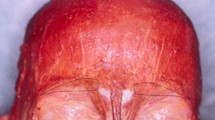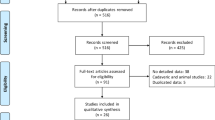Abstract
Background
Chronic facial paralysis induces degenerative facial muscle changes on the involved side, thus, making the individual seem as older than their actual age. Furthermore, contralateral facial hypertrophy aggravates facial asymmetry. A thread-lifting procedure has been used widely for correction of a drooping or wrinkled face due to the aging process. In addition, botulinum toxin injection can be used to reduce facial hypertrophy. The aim of study was to evaluate the effectiveness of thread lifting with botulinum toxin injection for chronic facial paralysis.
Methods
A total 34 of patients with chronic facial paralysis were enrolled from March to October 2014. Thread lifting for elevating loose facial muscles on the ipsilateral side and botulinum toxin A for controlling the facial muscle hypertrophy on the contralateral side were conducted. Facial function was evaluated using the Sunnybrook grading system and dynamic facial asymmetry ratios 1 year after treatment.
Results
All 34 patients displayed improved facial symmetry and showed improvement in Sunnybrook scores (37.4 vs. 83.3) and dynamic facial asymmetry ratios (0.58 vs 0.92). Of the 34 patients, 28 (82.4%) reported being satisfied with treatment.
Conclusion
The application of subdermal suspension with a reabsorbable thread in conjunction with botulinum toxin A to optimize facial rejuvenation of the contralateral side constitutes an effective and safe procedure for face lifting and rejuvenation of a drooping face as a result of long-lasting facial paralysis.
Zusammenfassung
Hintergrund
Die chronische Fazialisparese induziert degenerative Veränderungen der Gesichtsmuskulatur auf der betroffenen Seite. In der Folge wirkt der Patient älter, als er tatsächlich ist. Des Weiteren verstärkt eine kontralaterale Hypertrophie die Gesichtsasymmetrie. Ein Fadenliftingverfahren findet breite Anwendung zur Korrektur eines durch den Alterungsprozess hängenden oder faltigen Gesichts. Zusätzlich kann Botulinumtoxin injiziert werden, um die Gesichtshypertrophie zu verringern. In der vorliegenden Studie sollte die Wirksamkeit eines Fadenliftings mit Botulinumtoxininjektionen bei chronischer Fazialisparese beurteilt werden.
Methoden
Von März bis Oktober 2014 wurden insgesamt 34 Patienten mit chronischer Fazialisparese eingeschlossen. Ein Fadenlifting zur Hebung schlaffer Gesichtsmuskeln auf der ipsilateralen Seite und Botulinumtoxin-A-Injektionen zur Behandlung der Gesichtsmuskelhypertrophie auf der kontralateralen Seite wurden durchgeführt. Ein Jahr nach Behandlung wurde die Gesichtsfunktion mit dem Sunnybrook Grading System und anhand der dynamischen Gesichtsasymmetrieverhältnisse („dynamic facial asymmetry ratios“) beurteilt.
Ergebnisse
Alle 34 Patienten hatten eine verbesserte Gesichtssymmetrie und zeigten Verbesserungen im Sunnybrook-Score (37,4 vs. 83,3) sowie in den dynamischen Gesichtsasymmetrieverhältnissen (0,58 vs. 0,92). Von den 34 Patienten äußerten 28 (82,4 %) ihre Zufriedenheit mit der Behandlung.
Schlussfolgerung
Die Applikation einer subdermalen Suspension mit einem resorbierbaren Faden in Kombination mit Botulinumtoxin A, um die Gesichtsverjüngung auf der kontralateralen Seite zu optimieren, stellt ein wirksames und sicheres Verfahren zum Facelift und zur Verjüngung eines Gesichts dar, das bedingt durch eine lange bestehende Fazialisparese hängt.


Similar content being viewed by others
References
Bradbury ET, Simons W, Sanders R (2006) Psychological and social factors in reconstructive surgery for hemi-facial palsy. J Plast Reconstr Aesthet Surg 59:272–278
Sulamanidze MA, Fournier PF, Paikidze TG, Sulamanidze G (2002) Removal of facial soft tissue ptosis with special threads. Dermatol Surg 28(5):367–371
Abraham RF, DeFatta RJ, Williams EF 3rd (2009) Thread-lift for facial rejuvenation: assessment of long-term results. Arch Facial Plast Surg 11(3):178–183
Choi KH, Rho SH, Lee JM, Jeon JH, Park SY, Kim J (2013) Botulinum toxin injection of both sides of the face to treat post-paralytic facial synkinesis. J Plast Reconstr Aesthet Surg 66(8):1058–1063
Chaffoo RA (2013) Complications in facelift surgery: Avoidance and management. Facial Plast Surg Clin North Am 21:551–558
Lycka B, Bazan C, Poletti E, Treen B (2004) The emerging technique of the antiptosis subderma suspension thread. Dermatol Surg 30:41–44
Lee S, Isse N (2005) Barbedpolypropylene sutures formidface elevation. Arch Facial Plast Surg 7:55–61
Isse NG, Fodor PB (2005) Elevating the midface with barbed polypropylene sutures. Aesthet Surg J 25:301–303
Wu WTL (2004) Barbed sutures in facial rejuvenation. Aesthet Surg J 24:582–587
Sulamanidze M, Sulamanidze G (2009) APTOS suture lifting methods: 10 years of experience. Clin Plast Surg 36(2):281–306
Rachel JD, Lack EB, Larson B (2010) Incidence of complications and early recurrence in 29 patients after facial rejuvenation with barbed suture lifting. Dermatol Surg 36(3):348–354
Garvey PB, Ricciardelli EJ, Gampper T (2009) Outcomes in threadlift for facial rejuvenation. Ann Plast Surg 62(5):482–485
Oge AE, Yayla V, Demir GA, Eraksoy M (2005) Excitability of facial nucleus and related brain-stem reflexes in hemifacial spasm, post-facial palsy synkinesis and facial myokymia. Clin Neurophysiol 116(7):1542–1554
Choi D, Raisman G (2005) Disorganization of the facial nucleus after nerve lesioning and regeneration in the rat: Effects of transplanting candidate reparative cells to the site of injury. Neurosurgery 56(5):1093–1100
Torii Y, Akaike N, Harakawa T, Kato K, Sugimoto N, Goto Y, Nakahira S, Kohda T, Kozaki S, Kaji R, Ginnaga A (2011) Type A1 but not type A2 botulinum toxin decreases the grip strength of the contralateral foreleg through axonal transport from the toxin-treated foreleg of rats. J Pharmacol Sci 117(4):275–285
Author information
Authors and Affiliations
Corresponding author
Ethics declarations
Conflict of interest
W.J. Choe, H.D. Kim, B.H. Han, and J. Kim declare that they have no competing interests.
All procedures performed in studies involving human participants were in accordance with the ethical standards of the institutional and/or national research committee and with the 1964 Helsinki declaration and its later amendments or comparable ethical standards. Informed consent was obtained from all individual participants included in the study.
Rights and permissions
About this article
Cite this article
Choe, W.J., Kim, H.D., Han, B.H. et al. Thread lifting: a minimally invasive surgical technique for long-standing facial paralysis. HNO 65, 910–915 (2017). https://doi.org/10.1007/s00106-017-0367-3
Published:
Issue Date:
DOI: https://doi.org/10.1007/s00106-017-0367-3




